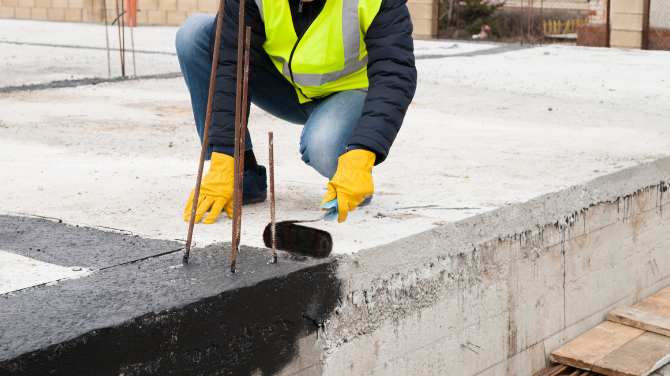Worldwide, there are several sites where construction sites with a good drainage pattern in a high-ground topography have been exhausted. Because of this, the only available and convenient locations can now be found in low-lying areas close to flood plains, swamps, lakes, rivers, etc.
As we go deeper into any water body, the amount of water that is pressing down on us also grows. The lower we sink, the more pressure we experience. This high water pressure in low-lying areas presents builders with the possibility of higher water heads with the progress in development. In addition to that, the rising water levels result in additional contaminants in these structures and building sites that adversely affect concrete and masonry units. It is important to note here that this is a problem only for buildings at seashore sites. Due to the inflow of water and contaminants, the concrete degrades with time and leaches out dissolved ions like Calcium present in it. This is one of the first and foremost reasons why waterproofing is an absolute must in RCC structures. Waterproofing RCC structures is important in below-grade areas as it helps prevent structural damage and water intrusion.
There are several reasons why waterproofing solutions are recommended in below-grade RCC structures or concrete surfaces. The first is that it helps prevent moisture from entering a facility. Moreover, it protects the structural integrity of a building from water infiltration, which can then result in structural damage or corrosion to the concrete and the embedded steel, respectively.
By design, concrete is a porous material. This means that water can easily pass through it by capillary action, hydrostatic pressure, or water vapor. Moreover, water can also penetrate structural defects, improperly installed or designed joints, and small or large cracks. Waterproofing can help eliminate deterioration to an RCC structure design that can take place from interior and exterior chemicals present at building sites.
Concrete’s Susceptibility To Chemicals
Concrete cannot withstand chemicals due to its alkalinity, reactivity, and permeability. Permeability to gases and liquids depends on the type of concrete. It is noteworthy that even the best concrete possesses permeability to some extent. Moreover, permeability increases quickly with an increase in the water-cement ratio as well as a decrease in the moisture-curing time. When fluids get penetrated concrete, it can result in chemical reactions, aggregation, or embedded steel if RCC structures contain them. In addition to that, leaching hydration compounds from cement or the deposition of crystalline reaction products/extraneous crystals can also damage the system.
Doors, Cracks & Points Of Infiltration
As mentioned above, the main reason for waterproofing RCC structures is to keep moisture at bay and protect the concrete’s structural components as well as the embedded reinforcing steel (if present). Concrete can remain waterproof if its integrity is maintained. That said, it can crack before and post hardening. This is when all the cracks turn into openings for moisture infiltration. Before hardening, concrete can also crack from drying shrinkage, construction movement, or early frost damage. After hardening, it can crack from seismic forces, settlement, excessive loading, deflection from soil movement, or vibrations.
Since concrete is a porous material, it is susceptible to getting infiltrated by moisture in several places. These points of moisture infiltration comprise all concrete joints, expansion joints, or control joints. Furthermore, openings can be present at penetrations, structural connections, internal drains, and tie rod holes.
Treatment Of Surface Defects
The performance of a waterproofing system can be affected significantly by the quality of the surface. Smooth surfaces that are free of depressions, holes, honeycombs, fins, dirt, dust, oils, humps, and other contaminants are essential to offer continuous support to the material used for waterproofing. It is also necessary to ensure good adhesion between the substrate and the membrane. In addition to that, water pressure on unsupported material can make it deform, extrude and rupture.
A successful Waterproofing System Is A Must
Waterproofing and leakage prevention are a must in occupied and sensitive areas because concrete can easily be infiltrated by moisture. One of the many attestations to the dangers of moisture infiltration is the condition of concrete driveways and roads we see these days. The best way to ensure a successful waterproofing system is the proper preparation of the concrete surface. Experts must address all concrete surface defects before the application of waterproofing material.
Furthermore, architects must offer adequate concrete surface guidelines to the concerned waterproofing contractors before the initial design, which will help eliminate conflicts arising between different trades. This will eventually result in a successful waterproofing system and an RCC structure with strong structural integrity.
Conclusion
Redwop is a prime waterproofing manufacturer in India that is involved in the production of a wide array of waterproofing solutions used in numerous residential and commercial construction applications. These solutions are manufactured using state-of-the-art technology and comply with the international standards of construction.

